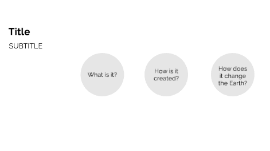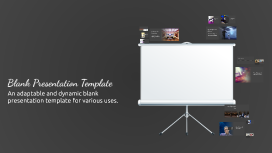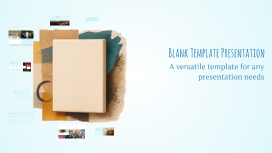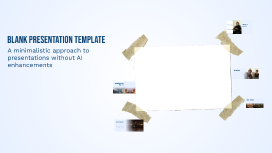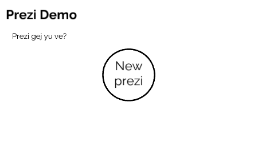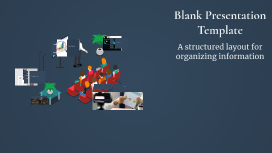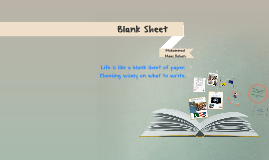Blank Presentation Template
Transcript: Structured Presentation Design Each slide in this presentation includes a designated heading box and an answer box for concise information presentation. This structure enhances clarity and engagement throughout the presentation. Key Features of Slide 5 Slide 4: Key Insights Visual Engagement The inclusion of room for images on each slide allows for visual reinforcement of the content, making it more appealing and memorable to the audience. Heading and Answer Section This slide features a designated space for a heading and a corresponding answer box, enabling clear presentation of key information. Key Insights and Answers Welcome to the Presentation Key Features of Slide 2 This slide features a heading box to present the main insight and an answer box for detailed responses or conclusions related to the topic. This presentation will cover key topics, insights, and tells facts about the build up of Kathryn Bigelow's succesful career in film. Heading Box Purpose The heading box serves as the main title for the content, providing a clear focus on the topic being discussed. It is designed to grab attention and set the tone for the information presented in the answer box. 1951 Answer Box Functionality The answer box is intended for key insights, data, or responses related to the heading. This section is crucial for delivering the main messages to the audience in a concise and impactful manner. Timeline of Key Events A chronological overview of significant milestones 2024 2023 2025 Launched the new project to enhance user engagement. Achieved significant user growth through innovative strategies. Expanded product features based on user feedback. Modern Approach Traditional Approach Approach B embraces modern tactics, leveraging technology and current trends to engage audiences more effectively. Approach A focuses on traditional methods, emphasizing long-standing techniques that have proven effective over time. Key Features of the Presentation Kathryn Bigelow By Charlie Tandy Key Information Here This slide provides essential details or insights relevant to the presentation's topic, encouraging engagement and understanding. Structured Layout for Clarity This slide provides a clear heading box to present a title or topic, allowing for immediate focus on the subject matter at hand. The answer box is designed for concise, relevant details that support or explain the heading, ensuring the audience can easily follow along. Key Features of Slide 11 Visual Support to Enhance Engagement The design allows for one or two images to be included, enhancing visual appeal and providing context to the information presented. This encourages audience engagement and aids in retention of the material. Structured Layout Key Features of This Slide This slide features a structured layout with a prominent heading box and an answer box for key responses. Ideal for summarizing important information or providing concise answers. Advantages of Digital Learning Benefits of Traditional Learning Digital learning, on the other hand, takes place online, providing flexibility in timing and location. It often utilizes multimedia resources and can be self-paced, catering to diverse learning styles and accessibility needs. Traditional learning often occurs in a physical classroom setting, led by an instructor. It relies on face-to-face interaction and structured environments, which can enhance social skills and classroom dynamics.






